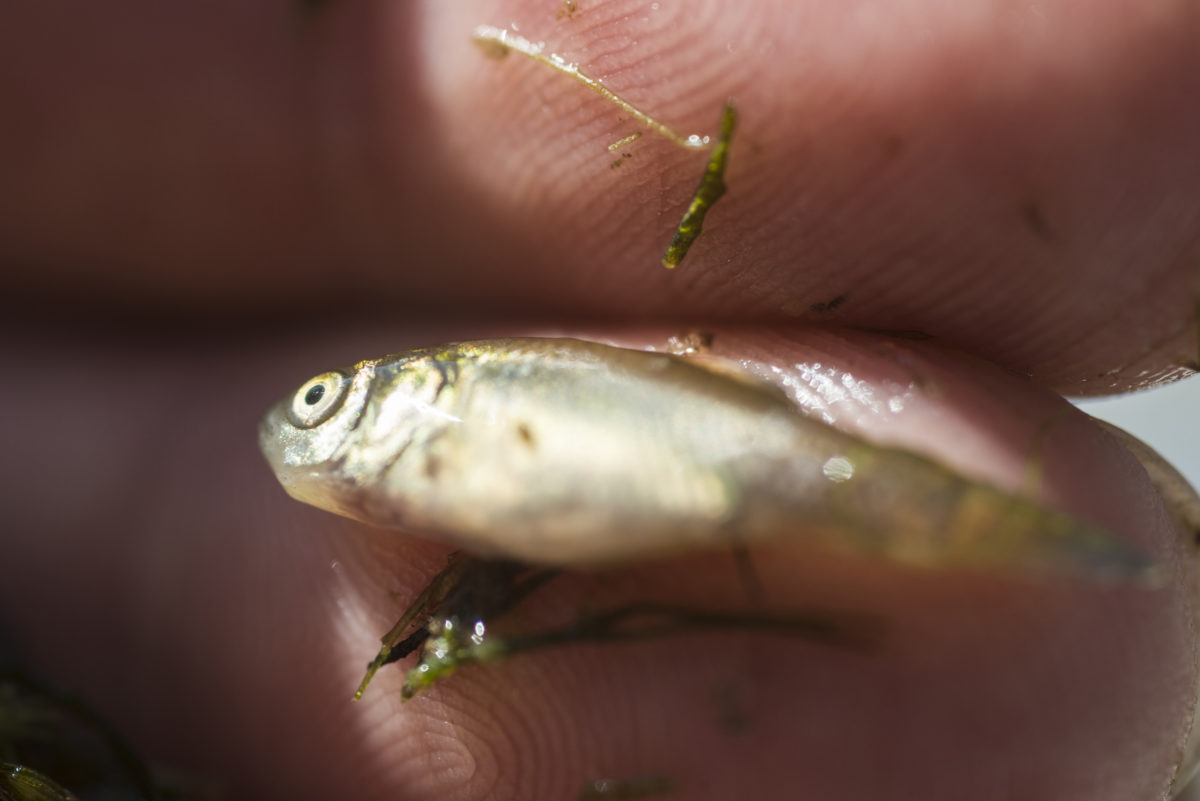Written by: Michael Cagle
As a Master’s student, I am looking into the presence of endocrine disruptors in the Potomac River. The endocrine system regulates virtually every activity in animals through the use of chemical compounds called hormones, and plays a vital role in the reproductive system. Specifically, I am looking at compounds that interfere with the normal functioning of the reproductive system by mimicking or disrupting the naturally occurring hormones testosterone and estrogen. I am working alongside Dr. Tom Huff, Dr. Greg Foster, and two undergraduate Oscar students at the Potomac Science Center. Scientists are just beginning to understand the wide variety of chemicals that are building up in the environment, chemicals whose effects we are only just learning about. These chemicals can have both toxic effects on organisms in the river, in addition to posing a potential risk to humans. Impaired functioning of this system from these foreign chemicals is associated with infertility, prostate cancer and breast cancer.
Every year, thousands of chemicals are released into the environment, with common sources being agricultural and sewage runoff, wastewater treatment plants, and industrial runoff. These chemicals can build up in the water, sediment, in the bodies of benthic macroinvertebrates, and potentially move up through the food web.

Over the summer, I collected sediment, water, and two species of fish (white perch and banded killifish). I am measuring concentrations of endocrine disruptors in these samples. Endocrine disruptors can come from a wide diversity of sources such as herbicides, anti-inflammatory drugs, contraceptives, detergents, sunscreen, and contraceptives. The chemicals I am looking at are not naturally occurring, but have severe impacts on fish, as well as other organisms, by reducing fertility and reproductive success of fish, and giving male fish traits that are normally only found in female fish. This has severe implications in the long-term stability of these populations. I am only looking at two species of fish, banded killifish and white perch, but these effects may be found in other fish or aquatic organisms. For the two species of fish I am looking at the amount of various endocrine disruptors in whole tissue of the fish and any fish large enough will have a separate analysis on the gut contents to measure the amounts of endocrine disruptors the fish are consuming.
As of right now, there are few studies looking at the effects of endocrine disruptors in aquatic ecosystems.

With a large number of synthetic chemicals entering the environment constantly, it is critical we measure, study, and understand the full impact these chemicals have on the environment. We also need to come up with ways to reduce concentrations of these harmful compounds.
My first year at George Mason’s graduate program has taught me a vast variety of things, both in the lab and in the field, such as how to collect, process, and analyze endocrine disruptors using analytical chemistry.
However, this research will only serve as a starting point for estimating the prevalence of endocrine disruptors in the Potomac River. Future work will continue to expand by looking at other harmful chemicals, and their biological and toxicological impacts on organisms. Hopefully, this research can eventually be used for developing a detailed risk assessment for humans.
Michael Cagle is a second year graduate student in the M.S. Biology program and hopes to graduate in the summer of 2018. He hopes to work in an environmental chemistry lab or environmental toxicology lab.

